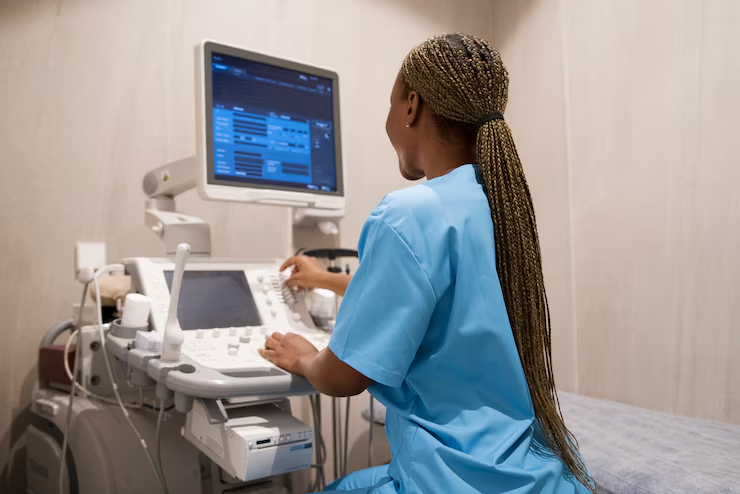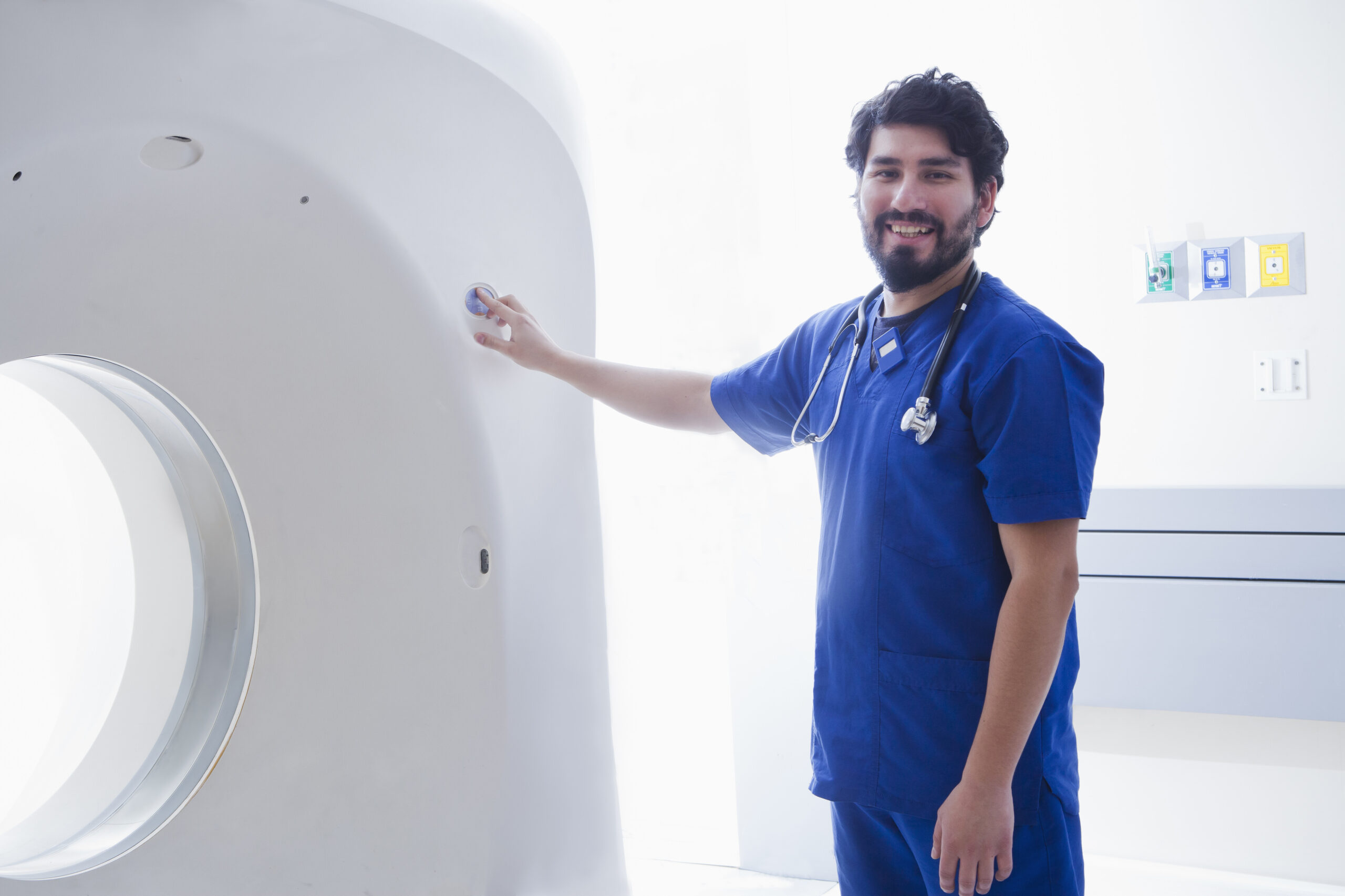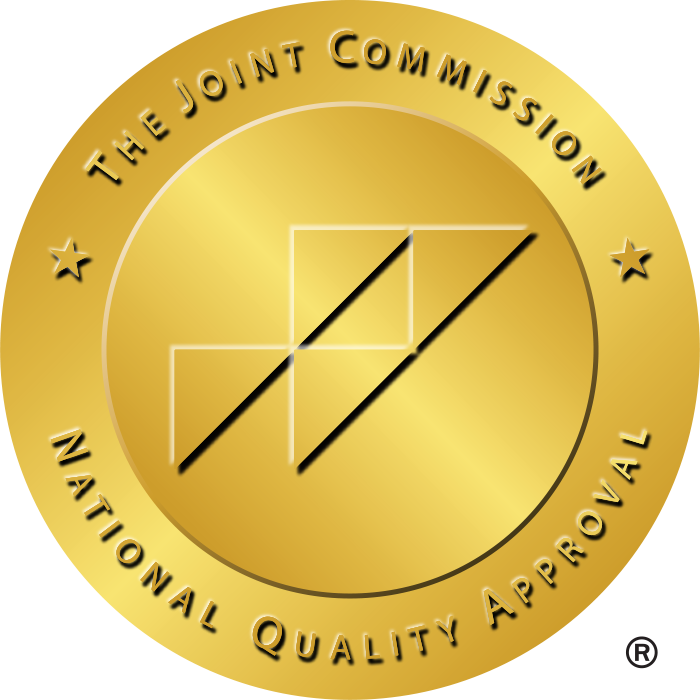The emergence of AI has revolutionized every sector it has touched, and the medical industry is no different. AI has deeply penetrated its claws into the medical field, and it’s helping doctors and medical professionals offer better healthcare outcomes with new and improved patient care techniques. One great example of it is ultrasound tech jobs, in which diagnostic imaging has been completely evolved.
Ultrasound equipment are not only limited to diagnostic tools anymore. The integration of AI has transformed these sonographers into diagnostic partners that have opened many possibilities that were considered science fiction before. The combination of artificial intelligence with human compassion is creating huge ripples for ultrasound tech jobs. The salary expectations, job prospects, and even the skill set are totally changed.
But the real question is, what does it mean for ultrasound techs? How does this integration affect ultrasound tech salary? How will it impact job search? And if it’s a threat to ultrasound tech jobs? These and many such questions have arisen in the minds of medical professionals. This is why it’s essential to understand this shift and how we can use it for our own benefit.

Is AI A Career Catalyst or Threat for Ultrasound Tech Jobs?
Like any industry, ultrasound tech jobs are also thinking about the same question we all had in mind when the AI landed in our lives. Will AI take away the jobs? The answer is not a simple yes or no. This is because the integration of AI in diagnostic imaging has definitely transformed the way it worked before. More accurate, more defined, and more precise. However, human involvement is not completely eradicated, neither will it any time soon.
But it did change how ultrasound techs use sonography equipment from diagnosis to analysis of results. The benefit of anything depends on its use. Hence, the integration of AI has evolved the role of ultrasound tech jobs rather than eliminating their need. However, one thing it did is that now ultrasound techs need to be more tech-savvy to collaborate with AI.
Sonography equipment was handled manually before, which may or may not result in errors. But with AI, ultrasound techs don’t have to rely solely on their experience to interpret diagnostic imaging data. AI can assist in both taking high-quality images and its analysis. It guides professionals in probe placement, identifies issues in real time, and even suggests diagnoses using deep learning algorithms.
Hence, AI is enhancing accuracy and consistency in data. This is why, rather than being a threat, AI is proving to be a catalyst for ultrasound tech career growth. The professionals are in great demand. Hence, ultrasound tech job openings are on the rise, offering plenty of growth opportunities in diverse medical settings.
Salary Boost and Demand of Ultrasound Tech Jobs After AI
Talking about demand, this shift has been proven to be very promising for ultrasound tech salary. With the instant surge in demand, employers are offering high wages with many benefits and perks. Since AI has enhanced productivity and reduced diagnostic errors, medical facilities are looking for certified sonographers with tech-savvy mindsets.
In case you are wondering how much do ultrasound techs make. According to recent data, the average ultrasound tech salary in the US is around $98,273 per year, which is comparable to most high-paying hospitalist jobs. However, in high-demand areas with more technical advancements, this salary can go even higher, up to $155,500 annually.
What Does AI Mean for Other Hospitalist Jobs
AI integration is not confined to ultrasound tech jobs only. This revolutionary step has changed many hospitalist jobs, including MRI tech jobs, radiology technician jobs, and even other allied health careers beyond diagnostic modalities. It is an exciting time for allied careers as the profession is booming with rising demands and plenty of growth opportunities.
For passionate individuals aiming to learn new things, this is a great opportunity to advance your skills and improve your digital literacy to better collaborate with artificial intelligence, resulting in better healthcare outcomes.
Future of Next-Gen Ultrasound Tech Jobs
Traditional training programs are not enough to train the next-gen workforce for ultrasound tech jobs. AI has become central for sonography jobs. Hence, the training programs also need to evolve to train the next-gen ultrasound techs with more digital literacy. Now, ultrasound tech jobs require more AI proficiency and experience with automated diagnostic tools. Hence, for newly graduated professionals, the only way to get experience is if their training programs have such modules.
Many essential certifications from accredited and recognized organizations, like ARRT, NCCT, and NRP certifications, now include separate modules for AI usage and implementation to equip students with up-to-date skills and knowledge. Hence, choosing training programs that blend traditional imaging techniques with an AI-focused curriculum is the only wise choice.
Ultrasound Tech Jobs Search in the Era of AI
As now many facilities have smart imaging systems. More and more job listings require digital proficiency. When you search for ultrasound tech jobs near me, you may come across requirements that demand a high level of digital proficiency with certifications in simulation programs such as CHSE. Many jobs now have compulsory requirements for AI proficiency and experience with automated diagnostic tools. Hence, your experience with smart imaging systems, electronic record keeping, or similar experience is now very essential.
Talking about job searches, AI has also made that very efficient. Many healthcare staffing agencies use AI software to manage their records and job listings for more accuracy. Using AI to find the perfect job match is also a great way to use AI positively for an ultrasound tech job search. If you are in search of ultrasound tech jobs, it’s important to collaborate with the best healthcare staffing agency to benefit from such automation, making your job search easier and efficient.
Remote Ultrasound Tech Jobs With AI
AI has opened many doors for opportunities, one of which is telemedicine. Since machines can do basic tasks, professionals can operate the equipment and give commands to AI from anywhere. Hence, remote ultrasound tech jobs are rapidly gaining popularity. As we all know the demanding nature of most hospitalist jobs. Due to this, many professionals have switched to travel jobs or have considered early retirement. However, remote ultrasound tech jobs offer a great alternative for more flexibility and work-life balance.
AI is reshaping hospitalist jobs’ mobility, and ultrasound tech jobs are reaping its benefits. AI has made it possible to supercharge the research for new and improved diagnostic tools. Due to this, medical facilities now have portable ultrasound equipment that is making remote jobs more accessible and widely available.
Final Thoughts!
AI, at first, does seem intimidating, seemingly threatening job stability. However, it’s rather a catalyst for career growth, especially for an already tech-forward job like ultrasound technician. It has proven to be a positive advancement in the medical industry with emerging opportunities, better ultrasound tech salary, and enhanced patient outcomes.
The accuracy and consistency of AI have reduced diagnostic errors to almost zero. This is why the medical industry is moving forward with a balanced collaboration of human intervention and artificial intelligence. The only way forward is to adapt to the changes, upskill your digital literacy, and stay updated on new and emerging ways AI is changing the world as we know it.







